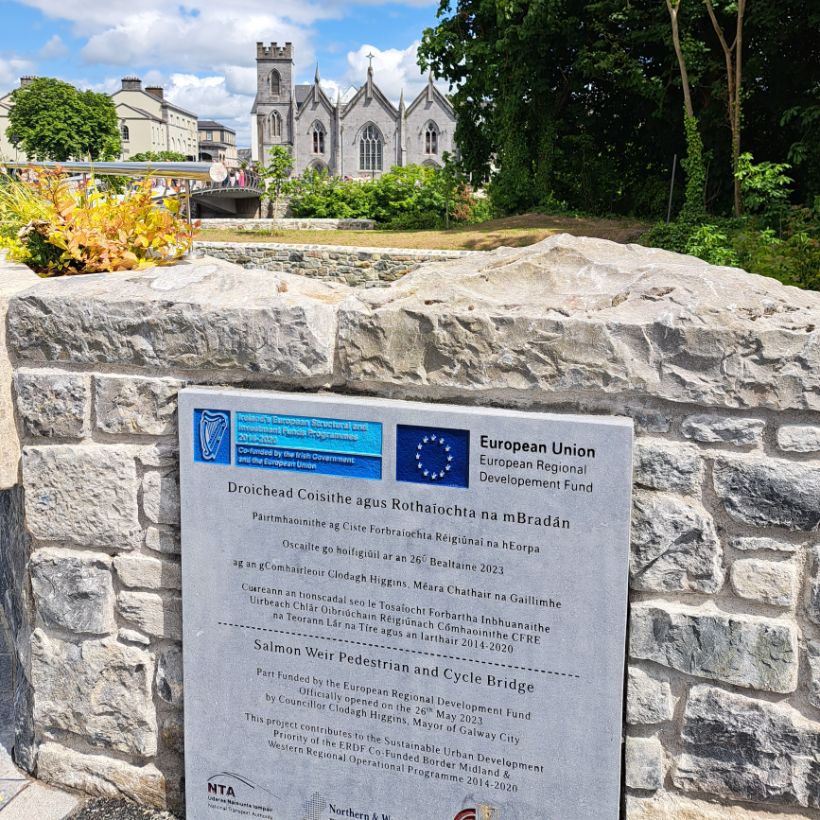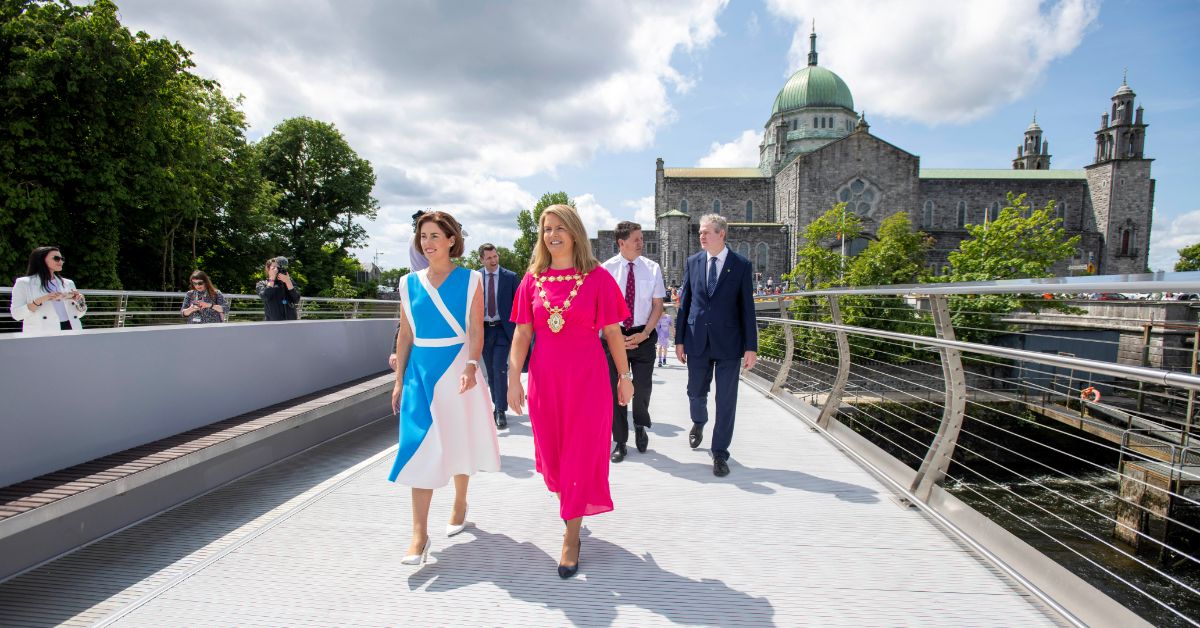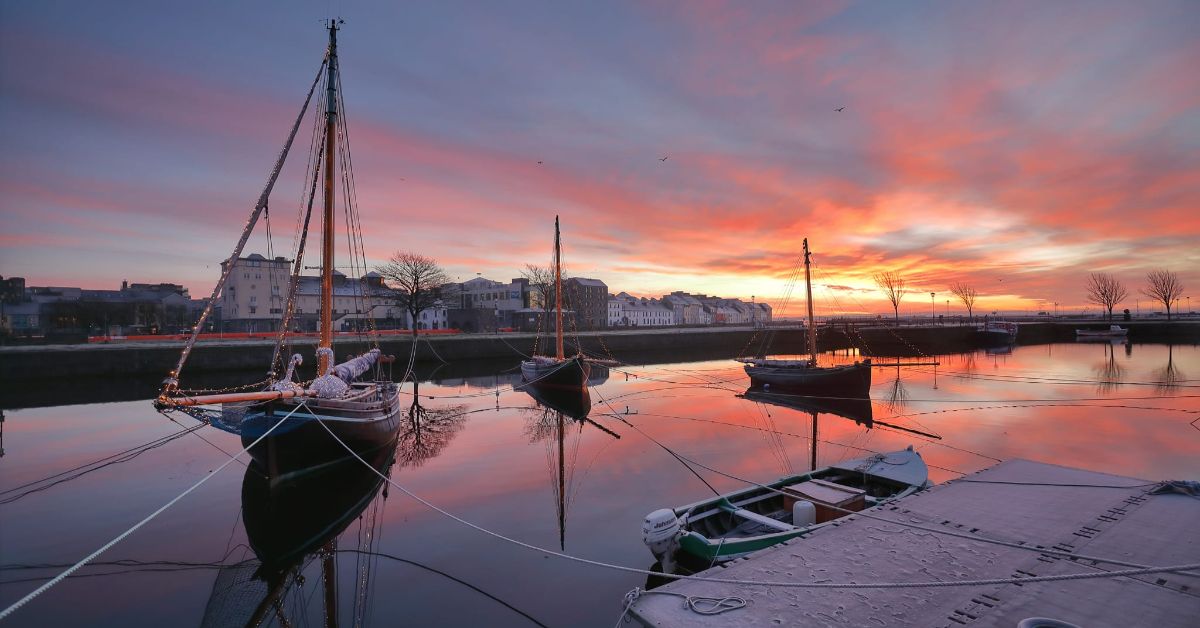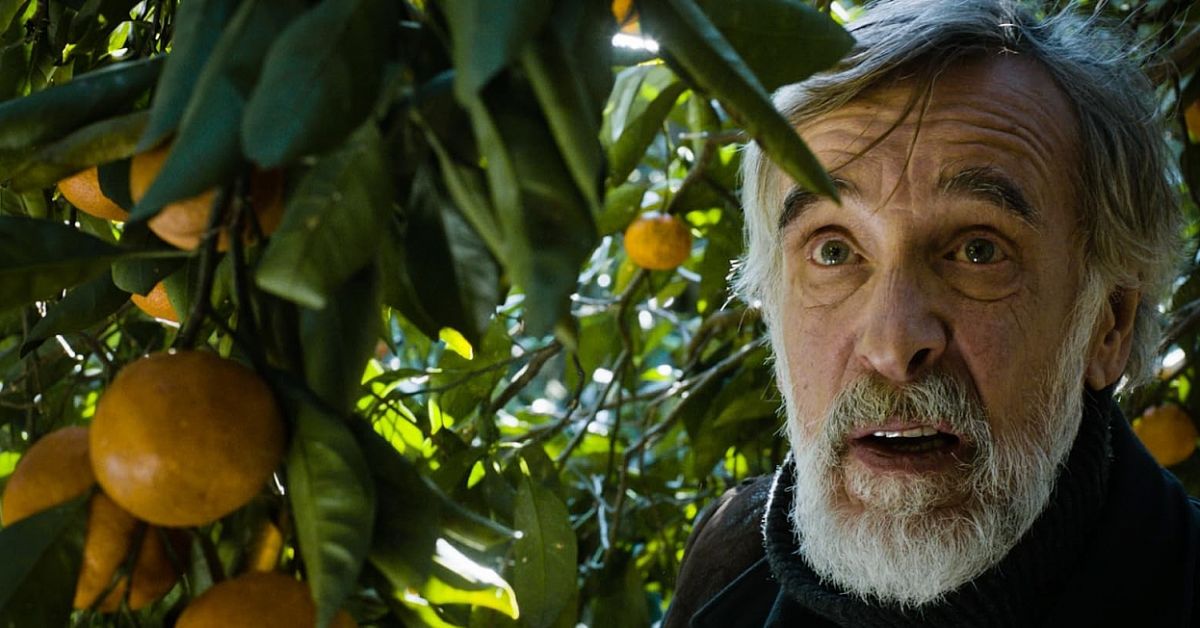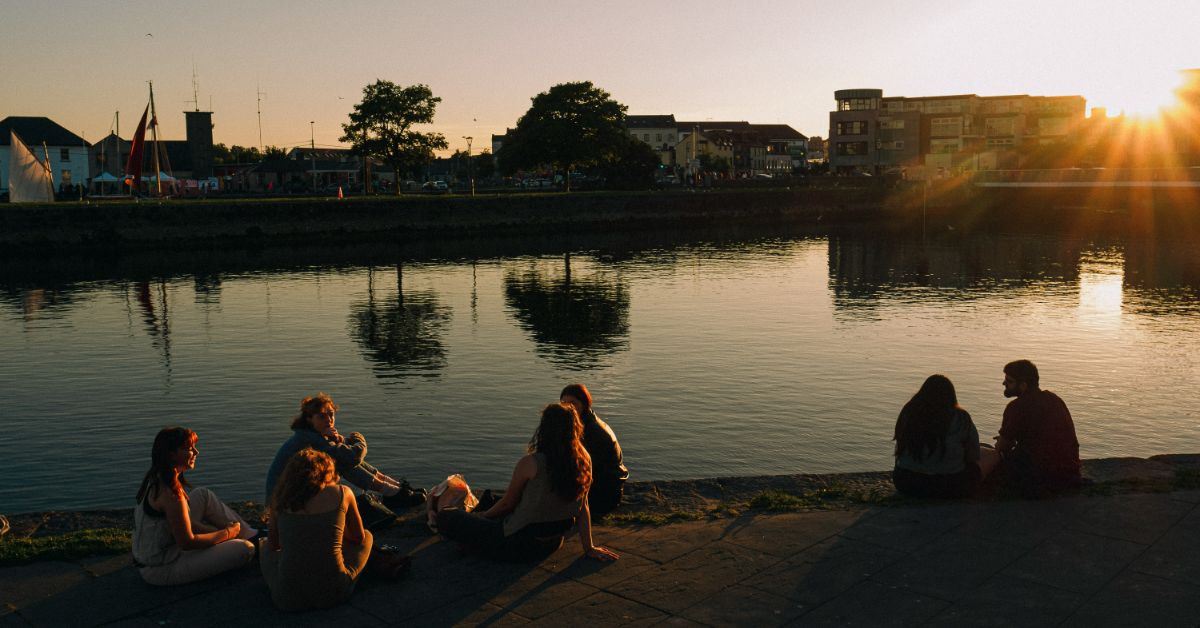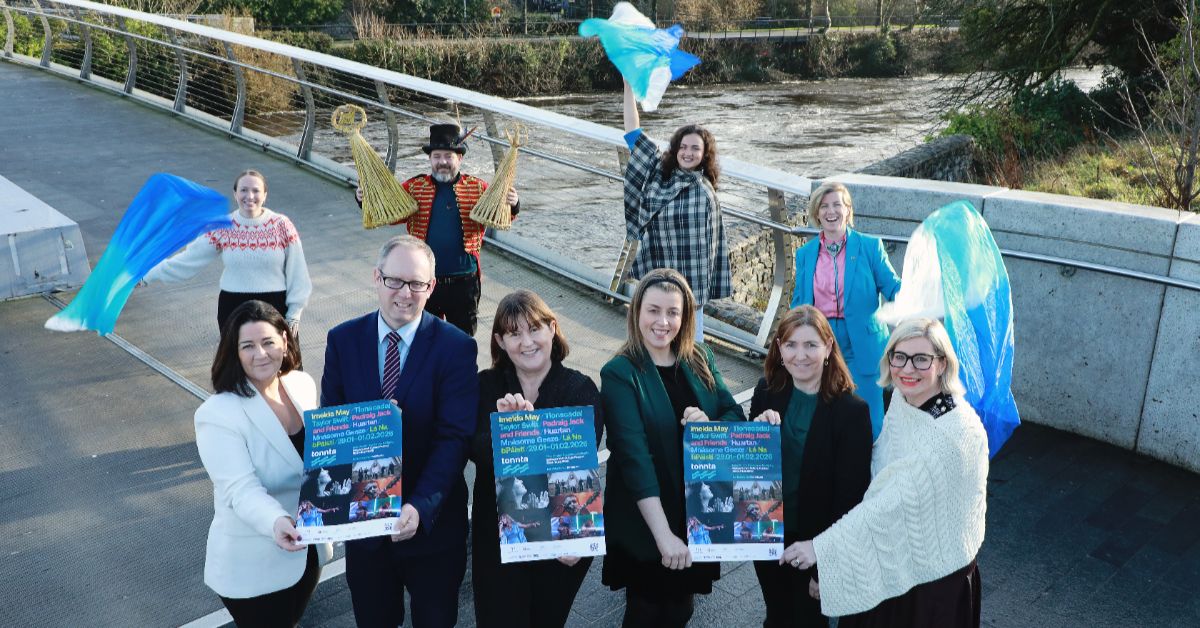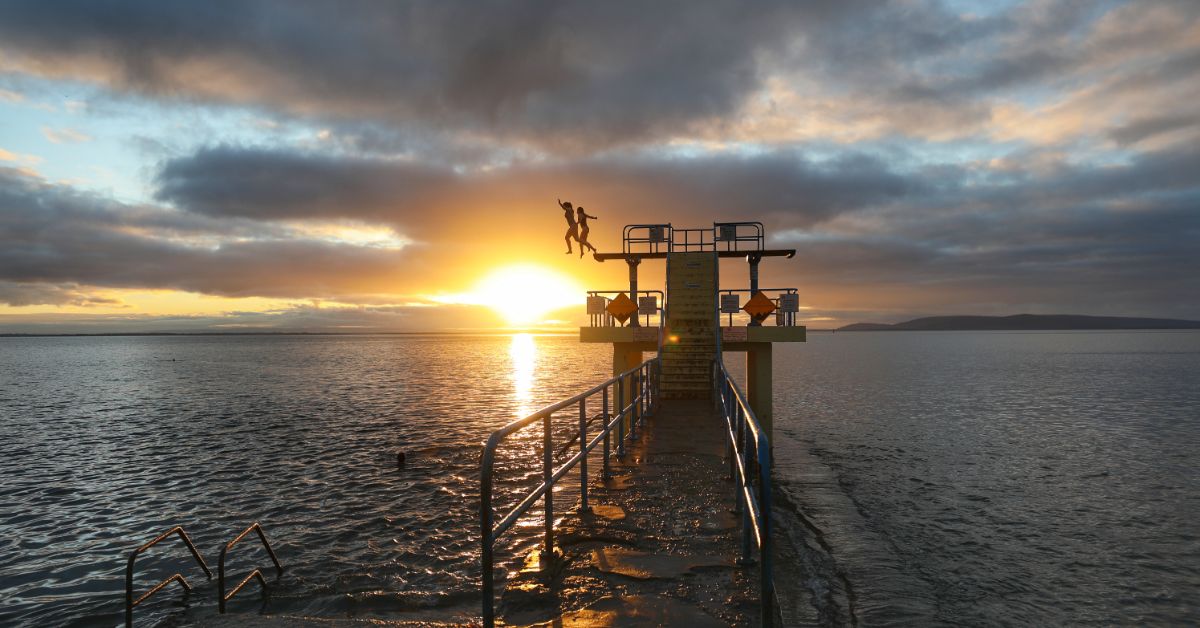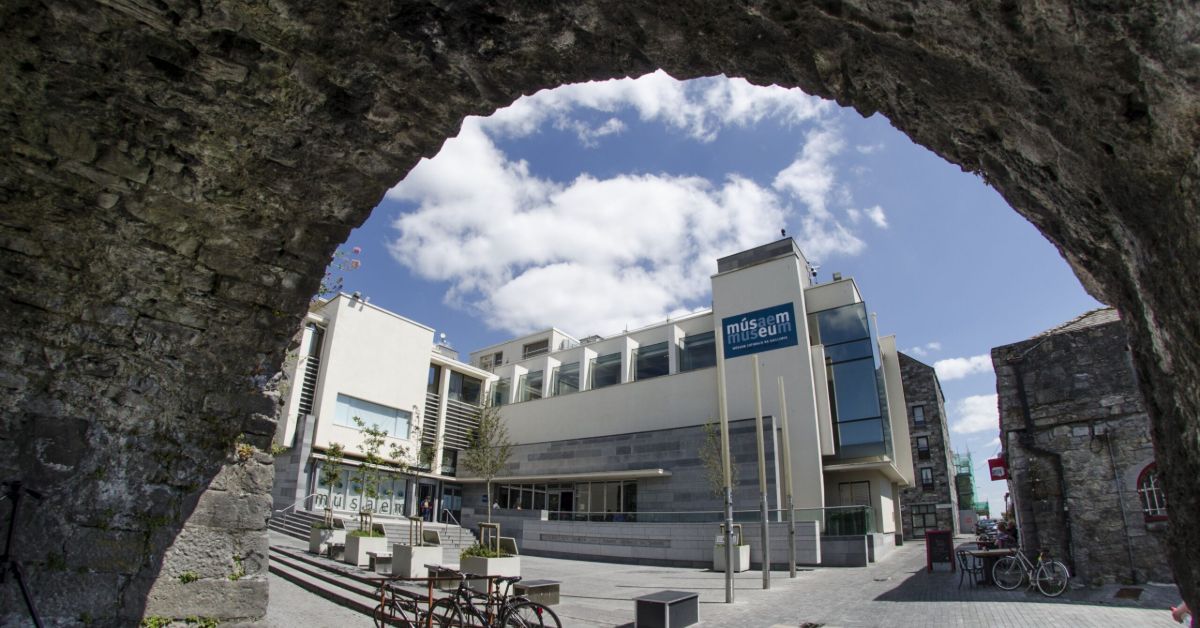Mayor of the City of Galway, Councillor Clodagh Higgins and Minister for Transport, Eamon Ryan T.D., were in Galway today to officially open the iconic new Salmon Weir Pedestrian and Cycle Bridge – the first bridge to span the River Corrib in over 30 years.
The new bridge creates a focal point for locals and tourists alike to cross the river on foot or by bike, taking in views including the Cathedral, Salmon Weir Bridge, aquatic and airborne wildlife, natural and built heritage synonymous with the city – and a new public space for the people of Galway. This project was funded by the Department of Transport through the National Transport Authority’s (NTA) Active Travel Programme and European Regional Development Funding (ERDF).
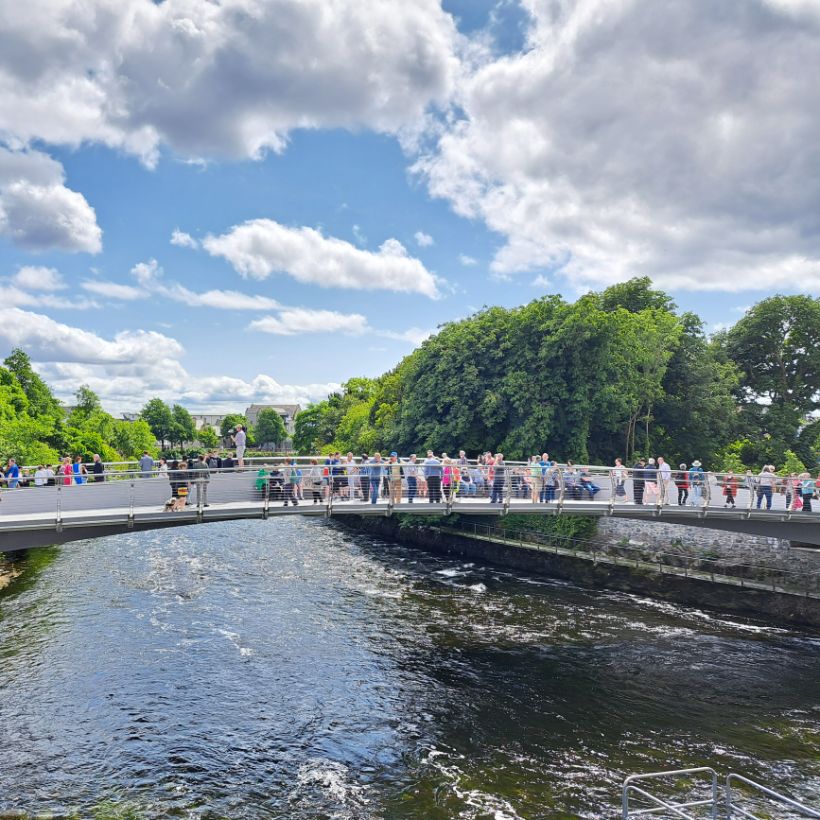
Speaking about the opening of the bridge, Brendan McGrath, Chief Executive of Galway City Council commented, “The opening of this new pedestrian and cycle bridge is a milestone in the delivery of the Galway Transport Strategy, an important link across the Corrib, and a fantastic new architectural and urban amenity space for the people of Galway. More than 10,000 pedestrians cross the existing bridge on foot every day, interacting with buses, cars, trucks, and other vehicles. The new bridge offers a seamless alternative, removed from vehicles, with a spectacular view as well as a space to dwell and take in the sounds and atmosphere of the city. I wish to congratulate the staff and contractors who delivered this impressive new bridge, which will be crossed by the people of Galway for generations to come. Galway City Council is grateful for the support of the National Transport Authority, and the European Commission, through European Regional Development Funding, facilitated by the Northern and Western Regional Assembly, for this project”.
Minister Eamonn Ryan said, “I am delighted to be here to mark the opening of this quite historic and beautiful new bridge in the shape of a salmon across the majestic Corrib River, the fastest flowing city river in Europe. The new bridge puts Galway alongside of some of the best-known cities in the world that are moving to make their centres better for people and nature by prioritising infrastructure that makes it easier for people to walk, cycle or just enjoy the sights and sounds of their surroundings. The bridge will be a huge asset to the city, linking West with East, the University with the bustling streets of the city, allowing locals, tourists and students to move safely without the risk of traffic. It is a great example of what is possible with the Active Travel Grants programme funded by my department through the NTA.”
Anne Graham, Chief Executive of the National Transport Authority said: “The NTA is delighted to have supported the construction of the new Salmon Weir Pedestrian and Cycle Bridge through its Active Travel Programme. Along with being a major focal point for the people of Galway, the new bridge will enhance the travel experience of people who regularly walk, wheel or cycle in the city and, we hope, it will encourage more people to choose active travel for their everyday journeys.”
Brendan Mooney, Acting Assistant Director of the Northern and Western Regional Assembly said, “The Northern and Western Regional Assembly, through our role as Managing Authority for the ERDF Operational Programme, are delighted to be part of this transformative project in the heart of Galway. The bridge provides a much-needed pedestrian and cycle link, and its beautiful design will be a legacy that we in the Assembly and the EU Commission will be very proud of.”
The new bridge is in the shape of a salmon to reflect the heritage of fishing in the area. It is approximately 85 metres in length, and crosses three watercourses, just 24 metres south of the existing Salmon Weir Bridge. The new bridge is lightweight and robust, with transparent parapets, which will offer uninterrupted views of Galway Cathedral, the Convent of Mercy, the existing Salmon Weir Bridge and the watercourses below.
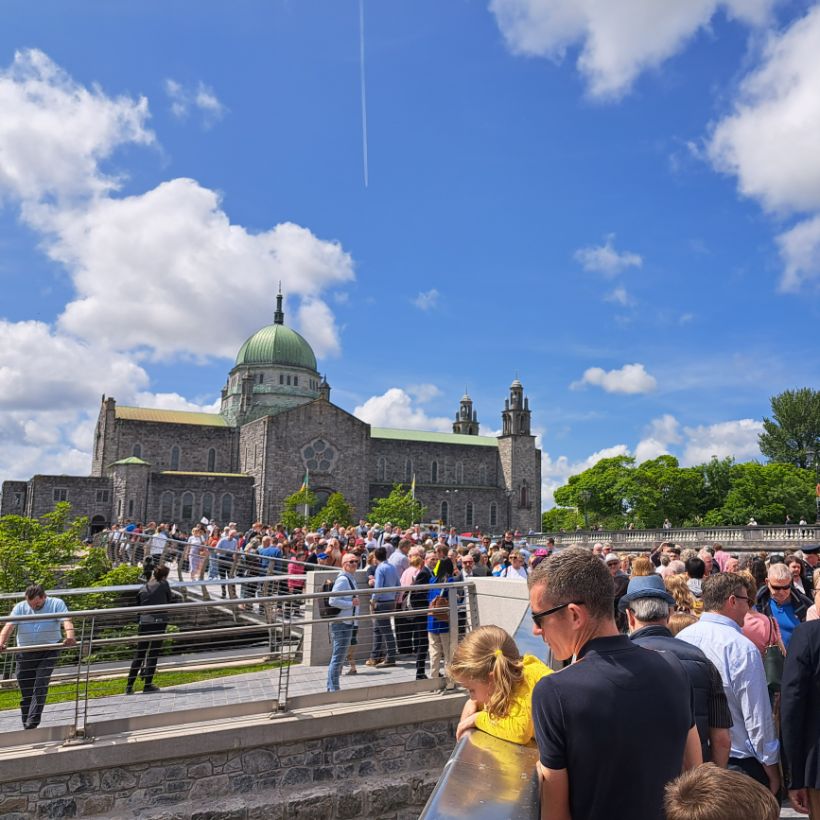
The new bridge is fully accessible for people with impaired mobility, with ramps on either side. The approach spans from the west and east are paved with flamed Kilkenny limestone, which has a high skid resistance, and is in line with the Galway City Public Realm Strategy. The approaches from the canal bank on the east side emerge gracefully, gently sloped, with elegant stonework blending in with the canal walls which have been carefully and painstakingly conserved. The approach parapets on the west are of cut limestone to reflect the limestone pattern on the Cathedral on the west and the Convent on the east.
A glazed oculus, incorporated into both approach spans, offers views of the watercourses below.
A Percent for Art project has been commissioned for the bridge and artists will shortly be invited to submit applications for a public art commission.
The official name of the new bridge will be confirmed following public consultation and review by the Galway City Council naming committee.
The new Salmon Weir Pedestrian and Cycle Bridge forms part of the Galway Transport Strategy (GTS). The objective of the GTS is to enhance sustainable travel in the city centre and reduce dependency on private motor vehicles, in line with national transport and planning policies. The new bridge will also support the delivery of BusConnects Galway: Cross-City Link (University Road to Dublin Road) by providing an alternative river crossing for active travel, so buses can take priority on the existing Salmon Weir Bridge. Cross-City Link was submitted to An Bord Pleanála for planning consent in September 2022.
